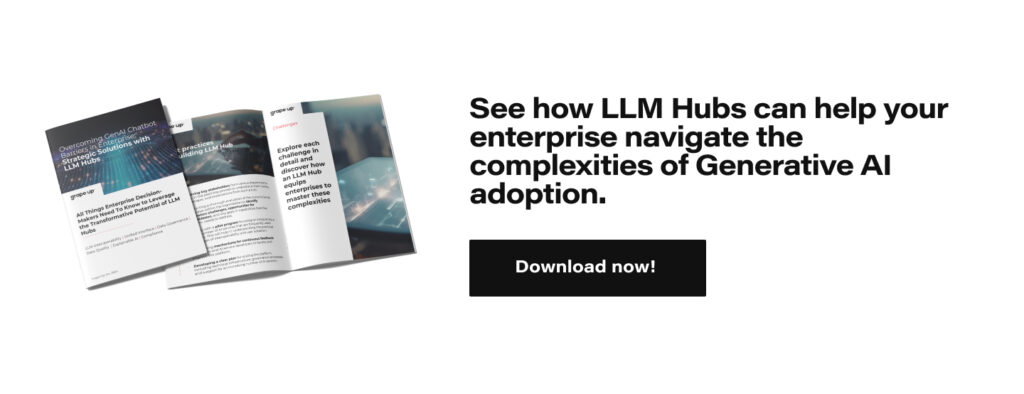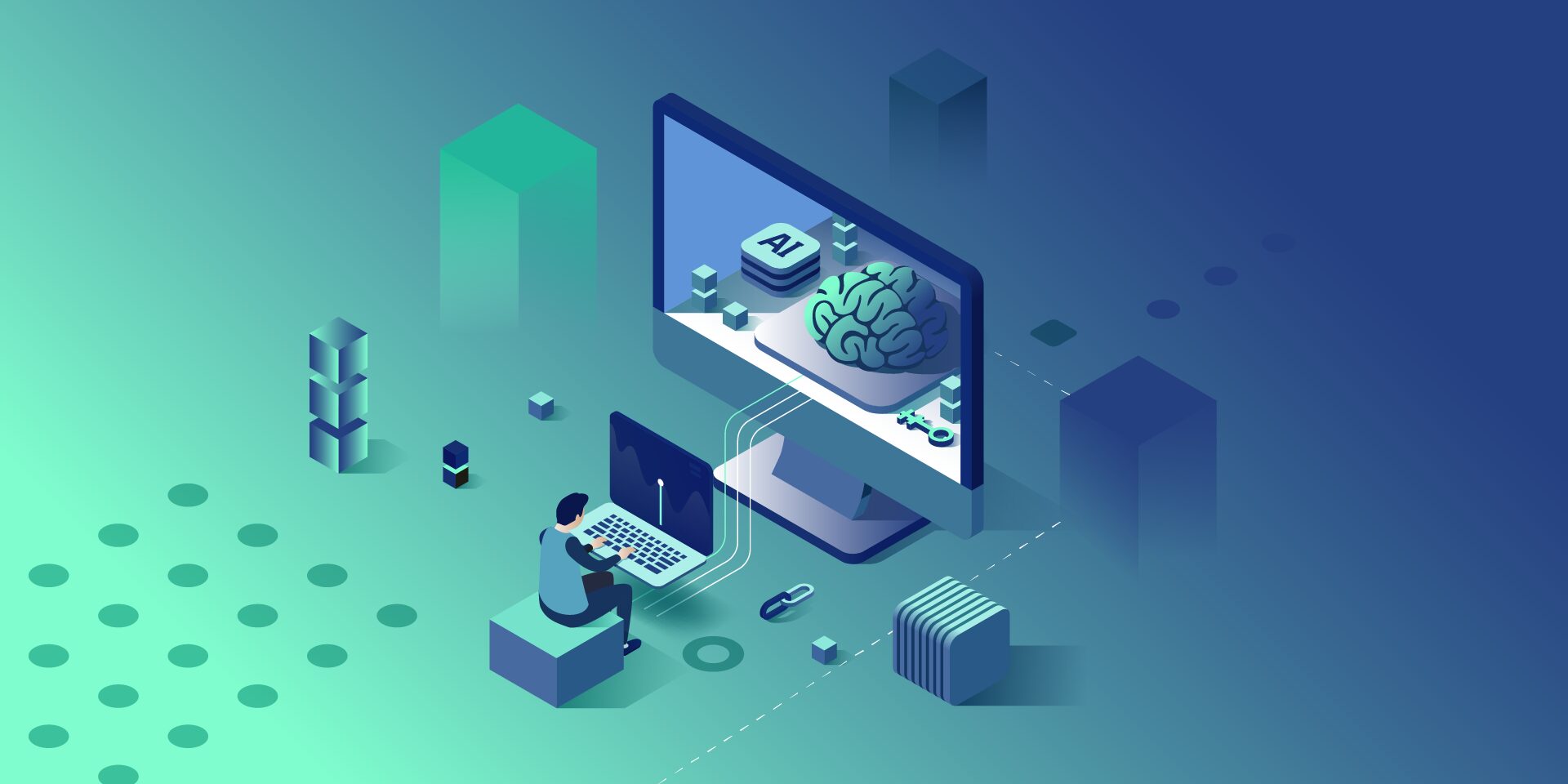From Silos to Synergy: How LLM Hubs Facilitate Chatbot Integration

In today’s tech-driven business environment, large language models (LLM)-powered chatbots are revolutionizing operations across a myriad of sectors, including recruitment, procurement, and marketing. In fact, the Generative AI market can gain $1.3 trillion worth by 2032. As companies continue to recognize the value of these AI-driven tools, investment in customized AI solutions is burgeoning. However, the growth of Generative AI within organizations brings to the fore a significant challenge: ensuring LLM interoperability and effective communication among the numerous department-specific GenAI chatbots.
The challenge of siloed chatbots
In many organizations, the deployment of GenAI chatbots in various departments has led to a fragmented landscape of AI-powered assistants. Each chatbot, while effective within its domain, operates in isolation, which can result in operational inefficiencies and missed opportunities for cross-departmental AI use.
Many organizations face the challenge of having multiple GenAI chatbots across different departments without a centralized entry point for user queries. This can cause complications when customers have requests, especially if they span the knowledge bases of multiple chatbots.
Let’s imagine an enterprise, which we’ll call Company X, which uses separate chatbots in human resources, payroll, and employee benefits. While each chatbot is designed to provide specialized support within its domain, employees often have questions that intersect these areas. Without a system to integrate these chatbots, an employee seeking information about maternity leave policies, for example, might have to interact with multiple unconnected chatbots to understand how their leave would affect their benefits and salary.
This fragmented experience can lead to confusion and inefficiencies, as the chatbots cannot provide a cohesive and comprehensive response.
Ensuring LLM interoperability
To address such issues, an LLM hub must be created and implemented. The solution lies in providing a single user interface that serves as the one point of entry for all queries, ensuring LLM interoperability. This UI should enable seamless conversations with the enterprise’s LLM assistants, where, depending on the specific question, the answer is sourced from the chatbot with the necessary data.
This setup ensures that even if separate teams are working on different chatbots, these are accessible to the same audience without users having to interact with each chatbot individually. It simplifies the user’s experience, even as they make complex requests that may target multiple assistants. The key is efficient data retrieval and response generation, with the system smartly identifying and pulling from the relevant assistant as needed.
In practice at Company X, the user interacts with a single interface to ask questions. The LLM hub then dynamically determines which specific chatbot – whether from human resources, payroll, or employee benefits (or all of them) – has the requisite information and tuning to deliver the correct response. Rather than the user navigating through different systems, the hub brings the right system to the user.
This centralized approach not only streamlines the user experience but also enhances the accuracy and relevance of the information provided. The chatbots, each with its own specialized scope and data, remain interconnected through the hub via APIs. This allows for LLM interoperability and a seamless exchange of information, ensuring that the user’s query is addressed by the most informed and appropriate AI assistant available.

Advantages of LLM Hubs
- LLM hubs provide a unified user interface from which all enterprise assistants can be accessed seamlessly. As users pose questions, the hub evaluates which chatbot has the necessary data and specific tuning to address the query and routes the conversation to that agent, ensuring a smooth interaction with the most knowledgeable source.
- The hub’s core functionality includes the intelligent allocation of queries. It does not indiscriminately exchange data between services but selectively directs questions to the chatbot best equipped with the required data and configuration to respond, thus maintaining operational effectiveness and data security.
- The service catalog remains a vital component of the LLM hub, providing a centralized directory of all chatbots and their capabilities within the organization. This aids users in discovering available AI services and enables the hub to allocate queries more efficiently, preventing redundant development of AI solutions.
- The LLM hub respects the specialized knowledge and unique configurations of each departmental chatbot. It ensures that each chatbot applies its finely-tuned expertise to deliver accurate and contextually relevant responses, enhancing the overall quality of user interaction.
- The unified interface offered by LLM hubs guarantees a consistent user experience. Users engage in conversations with multiple AI services through a single touchpoint, which maintains the distinct capabilities of each chatbot and supports a smooth, integrated conversation flow.
- LLM hubs facilitate the easy management and evolution of AI services within an organization. They enable the integration of new chatbots and updates, providing a flexible and scalable infrastructure that adapts to the business’s growing needs.
At Company X, the introduction of the LLM hub transformed the user experience by providing a single user interface for interacting with various chatbots.
The IT department’s management of chatbots became more streamlined. Whenever updates or new configurations were made to the LLM hub, they were effectively distributed to all integrated chatbots without the need for individual adjustments.
The scalable nature of the hub also facilitated the swift deployment of new chatbots, enabling Company X to rapidly adapt to emerging needs without the complexities of setting up additional, separate systems. Each new chatbot connects to the hub, accessing and contributing to the collective knowledge network established within the company.
Things to consider when implementing the LLM Hub solution
1. Integration with Legacy Systems: Enterprises with established legacy systems must devise strategies for integrating with LLM hubs. This ensures that these systems can engage with AI-driven technologies without disrupting existing workflows.
2. Data Privacy and Security: Given that chatbots handle sensitive data, it is crucial to maintain data privacy and security during interactions and within the hub. Implementing strong encryption and secure transfer protocols, along with adherence to regulations such as GDPR, is necessary to protect data integrity.
3. Adaptive Learning and Feedback Loops: Embedding adaptive learning within LLM hubs is key to the progressive enhancement of chatbot interactions. Feedback loops allow for continual learning and improvement of provided responses based on user interactions.
4. Multilingual Support: Ideally, LLM hubs should accommodate multilingual capabilities to support global operations. This enables chatbots to interact with a diverse user base in their preferred languages, broadening the service’s reach and inclusivity.
5. Analytics and Reporting: The inclusion of advanced analytics and reporting within the LLM hub offers valuable insights into chatbot interactions. Tracking metrics like response accuracy and user engagement helps fine-tune AI services for better performance.
6. Scalability and Flexibility: An LLM hub should be designed to handle scaling in response to the growing number of interactions and the expanding variety of tasks required by the business, ensuring the system remains robust and adaptable over time.
Conclusion
LLM hubs represent a proactive approach to overcoming the challenges posed by isolated chatbots within organizations. By ensuring LLM interoperability and fostering seamless communication between different AI services, these hubs enable companies to fully leverage their AI assets.
This not only promotes a more integrated and efficient operational structure but also sets the stage for innovation and reduced complexity in the AI landscape. As GenAI adoption continues to expand, developing interoperability solutions like the LLM hub will be crucial for businesses aiming to optimize their AI investments and achieve a cohesive and effective chatbot ecosystem.
Interested in exploring how LLM hubs can enhance your organization’s AI strategy? Contact Grape Up today to discover our solutions and see how we can help you integrate and maximize your AI capabilities!
Check related articles
Read our blog and stay informed about the industry's latest trends and solutions.
see all articles






